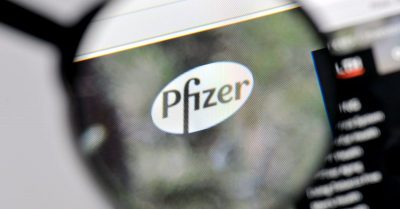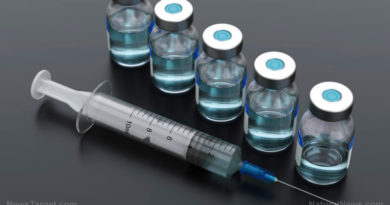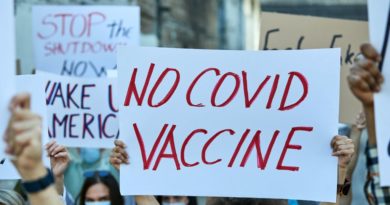Viral Optimism: The Pfizer-BioNTech Vaccine

The announcement that Pfizer Inc., along with its collaborative partner BioNTech SE, had come up with a successful vaccine candidate to combat the novel coronavirus SARS-CoV-2 sent the markets soaring. In New York, Pfizer’s shares rose by 15 percent in pre-market trading; those of BioNTech, Nasdaq-listed, rose 25 percent. “Today is a great day for science and humanity,” a confident Pfizer Chairman and CEO Albert Bourla crowed. “We are reaching this critical milestone in our vaccine development program at a time when the world needs it most with infection rates setting new records, hospitals nearing over-capacity and economies struggling to reopen.”
Bourla was in no mood to be modest about the record of the mRNA-based vaccine candidate, called BNT162b2. “With today’s news, we are a significant step closer to providing people around the world with a much needed breakthrough to help bring an end to this global health crisis. We look forward to sharing additional efficacy and safety data generated from thousands of participants in the coming weeks.”
The phase 3 clinical trial began on July 27, using 43,538 study participants.
“The first interim analysis of our global Phase 3 study provides evidence that a vaccine may effectively prevent COVID-19,” explained Uğur Şahin of BioNTech, its co-founder and CEO. “This is a victory for innovation, science and a global collaborative effort.”
Bourla, perhaps realising that sceptics and the unsure will be eyeing such claims with reservation, has done much to squeeze the public relations process. In an open letter on October 16, he assumed a voice almost presidential in character. Forget elected officials or world leaders – here was Bourla as de facto vaccine president and humanitarian rescuer, “wanting to speak directly to the billions of people, millions of businesses, and hundreds of governments around the world that are investing their hopes in a safe and effective COVID-19 vaccine to overcome this pandemic.”
He promised transparency in the three areas where success had to be shown before approval for public use could be sought. The vaccine had to first be effective in preventing COVID-19 “in at least a majority of vaccinated persons.” It had to be demonstrated as safe “with robust safety data generated from thousands of patients.” It also had to be shown “that the vaccine can be consistently manufactured at the highest quality standards.”
Pfizer has also not exactly been transparent in releasing the full details of its preliminary analysis, but it certainly has been keen to celebrate the findings so far. The vaccine candidate, for instance, was “more than 90% effective in preventing COVID-19 in participants without evidence of prior SARS-CoV-2 infection in the first interim efficacy analysis.” Data was also drawn from 94 confirmed COVID-19 cases, though nothing has been said about the vaccine’s effectiveness on the issue of re-infection.
Of the enrolled participants, 42% had “diverse backgrounds” (“racially and ethnically”). No serious safety concerns were noted. Submission to the US Food and Drug Administration for Emergency Use Authorization is anticipated once “the required safety milestone is achieved”. The clinical trial is set to continue to its final analysis of 164 confirmed cases “to collect further data and characterize the vaccine candidate’s performance against other study endpoints.”
Such news, despite being based on interim data as yet unpublished in peer-review literature, delighted certain members of the scientific community. Sir John Bell, regius professor of medicine at Oxford University, could barely contain his excitement. “I am probably the first guy to say that [life will be back to normal by spring], but I will say that with some confidence.” Anthony Fauci of the US National Institutes of Health found the returns of the trial “just extraordinary”.
But even amidst the frothy enthusiasm, notes of caution gurgled. Erika Edwards for NBC News lists a few reservations. “Pfizer’s vaccine is a new type of technology that’s never been used in mass human vaccination before and experts caution that much remains unknown about its safety, how long it might work and who might benefit most.”
One such expert is Gregory Poland, director of the Mayo Clinic’s Vaccine Research Group in Rochester, Minnesota.
“We don’t know anything about groups they didn’t study, like children, pregnant women, highly immunocompromised people and the eldest of the elderly.” Virologist Brenda Wren of the London School of Hygiene and Tropical Medicine is another. “It is a case of ‘so far so good’ but more confirmatory safety and efficacy studies are required.”
The heralded nature of the untried technological feature of the vaccine – at least when it comes to being applied to humans – lies in the speed and scale it can be manufactured at. Messenger-RNA (mRNA) tutors the immune system to target the spike protein of the virus. As Isabelle Bekeredjian-Ding of Germany’s Paul Ehrlich Institut describes it, “An mRNA is basically like a pre-form of a protein and its [sequence encodes] what the protein is basically made of later on.” Once delivered into the body, the cells readthe mRNA as a set of instructions to build the viral protein in question. The molecules of the virus are thereby created but do not form the virus itself. The immune system, tricked as it were, picks up on the presence of such viral proteins, producing a defensive response.
Pfizer’s bubbly confidence will have to be read alongside its history of data manipulation and publication strategy, all in the service of profit maximisation. In 2008, it was found that Pfizer had tinkered with the publication of studies on the use of its epilepsy drug Neurontin, enabling it to sell the drug for uses not approved by the US Food and Drug Administration. Studies undertaken showing negative outcomes for the use of the drug for unapproved uses were suppressed or delayed.
In 2014, the company agreed to pay $325 million to resolve claims it defrauded insurers and health care benefit providers by marketing Neurontin for those unapproved uses. Despite forking out in the settlement, Pfizer refused to admit wrongdoing. Worth thinking about as more data from the BNT162b2 trials is gathered and released.
*
Note to readers: please click the share buttons above or below. Forward this article to your email lists. Crosspost on your blog site, internet forums. etc.
Dr. Binoy Kampmark was a Commonwealth Scholar at Selwyn College, Cambridge. He lectures at RMIT University, Melbourne. He is a frequent contributor to Global Research and Asia-Pacific Research. Email: [email protected]
Featured image is from Children’s Health Defense
*** This article has been archived for your research. The original version from Global Research can be found here ***


